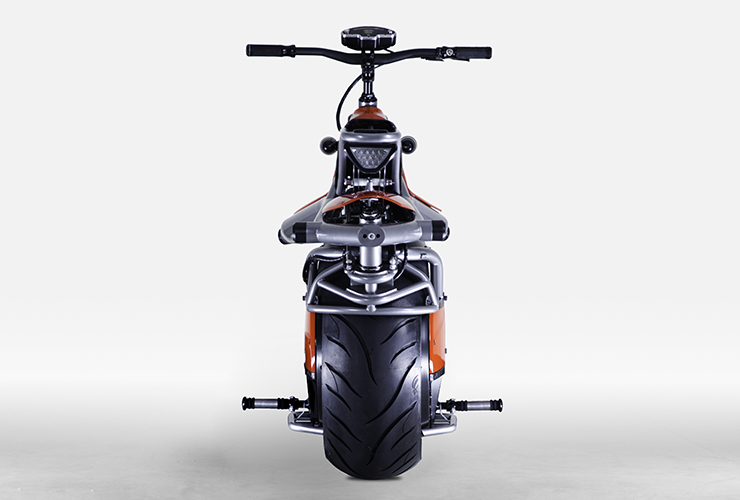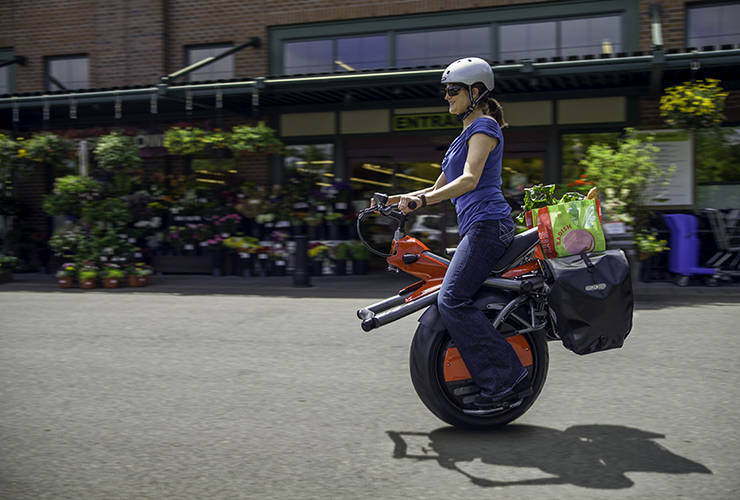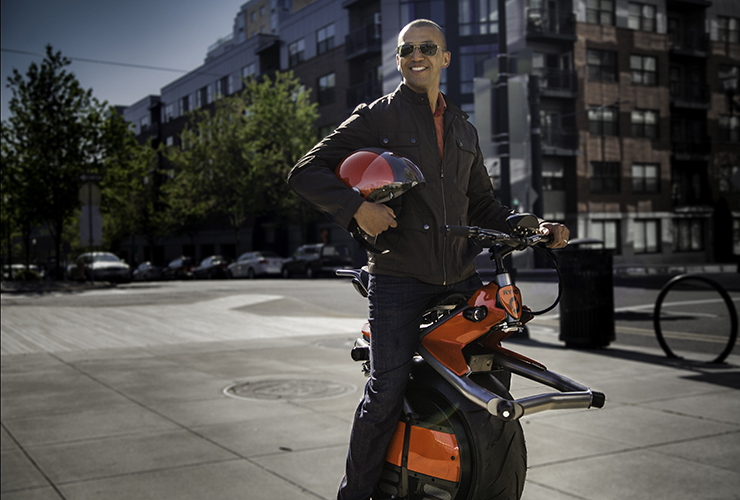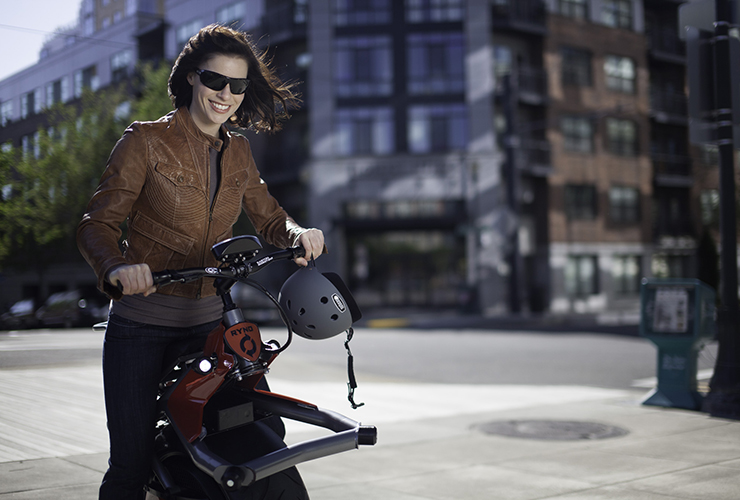What is a RYNO? Well, it’s less than a motorcycle (in some ways), but in other ways, it’s so much more. One-wheeled, electric-powered. A machine that has no greater footprint than you do. Capable of operating at speeds up to 10 miles per hour – or as slowly as a casual stroll. The RYNO is transportation, humanized. The first personal mobility device that’s built to connect you to people, not take you away from them. The RYNO lets you mix and mingle into a crowd, naturally.
History
That daydream of a 13-year-old became a sketch on napkin. Hoffmann – a self-taught engineer with 15 years of auto industry engineering experience designing heavy plant machinery – approached the dilemma in a unique manner. Rather than figuring out if he could build it, he instead spent time trying to figure out what would stop him from building it. He kept finding low cost high tech components until all that was left was the sheet metal to connect it. So he took a machine-shop class at the local community college and got busy.
Six years and three prototypes later, all the lessons learned in the shop and all the feedback from the road have been combined into an amazing product, which is set to enter production as the world’s first. The one-wheeled, ultra-efficient urban personal transportation device of the next generation.


A balanced machine
RYNO relies on the same balance technology as other electronically stabilized products like remote controlled helicopters, jet planes and space ships. The technology uses the combination of an accelerometer sensor that knows where the center of the earth is, a gyroscopic sensor that is highly reactive to sensing tilt angles, and a set of motors to drive the wheel back and forth under the center of gravity. As the bike leans forward the motors drive the wheel under the rider to keep the bike in balance. To accelerate the rider simply pushes down on the handlebars with enough force to prevent the tilt angle from coming back to zero. The more the rider works to keep the handlebars from coming up, the harder the motors drive to counter that force. Side-to-side the RYNO steers like a conventional motorcycle for balance.

A balanced rider
On the RYNO, the rider sits comfortably and naturally upright. Field-tested motorcycle ergonomics were easily adapted to the RYNO’s frame, despite its unique size and balance requirements. The RYNO rider sits more upright than the rider of a typical street-oriented sport bike, allowing them to more quickly and easily pull back and slow the bike down. But no matter how fast you’re moving, you’ll be as comfortable on the RYNO as you are on your own two feet.


Chris Hoffmann
Chris Hoffmann is in a unique position to speak on both innovation and transportation, even though he spent fifteen years as an automotive engineer he’s not speaking from a car company’s vantage point. Yes, he founded a new lifestyle around his single wheel transportation product yet he’s not selling his own solution to urban gridlock. Chris Hoffmann is instead taking a stand for how the efficiency of a country’s transportation system is directly proportional to its quality of life, how the consistency and accessibility of a seamless transportation infrastructure should resemble a socially conscious utility, servicing all people by saving time.
The innovation Chris speaks of has a lineage all the way back to when humans stood up on their hind legs to be confronted by a pair of hands, and how those hands demanded new mental capacity to take full advantage of their utility. Once those hands had the dexterity to move not as threat or protection, but to offer the motivation behind their expression, these hands then had the capacity to create new realities, art, dance and music.
Chris’ inquiry is into how what’s coded in our DNA has millions of years of history creating innovation that’s more than simple products but is coded to build tools to improve our society so we all can thrive together. Innovation is what’s trapped in the core of who we are. Chris’ mission it to unlock these gifts through vulnerability, transparency, self-referenced decision making and his accountability to share his decision-making processes, so we can all learn from each other’s discoveries and failures.